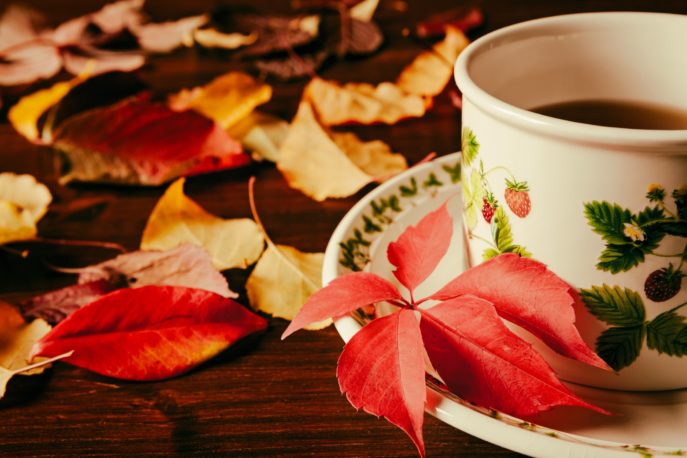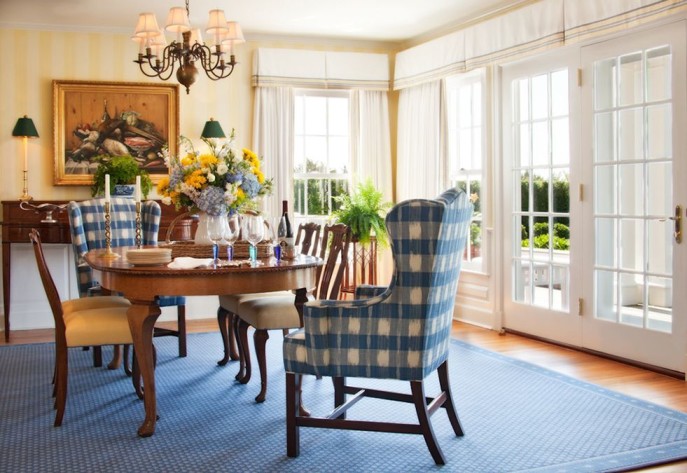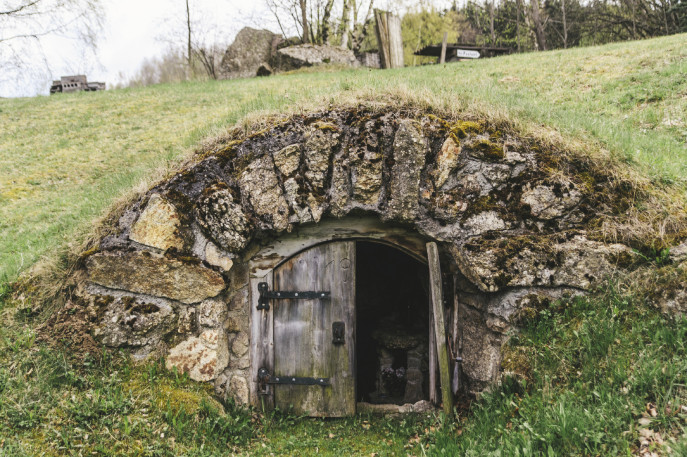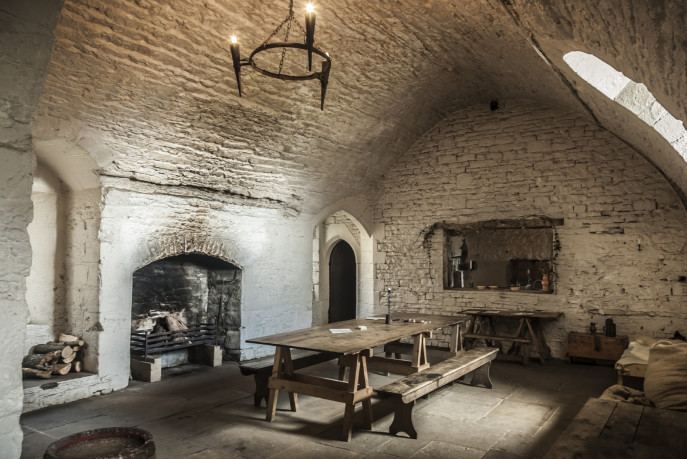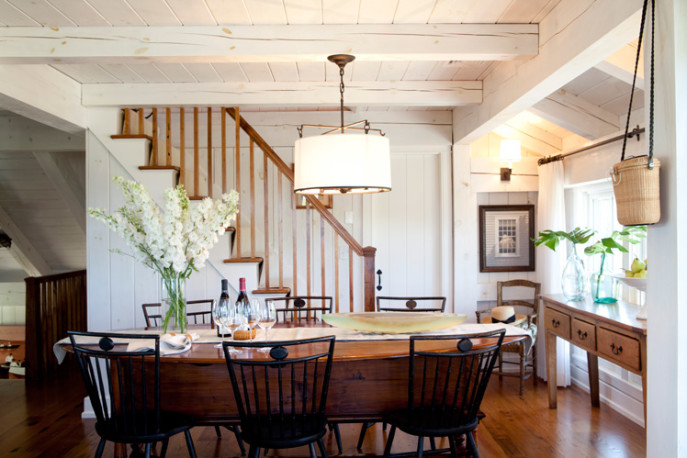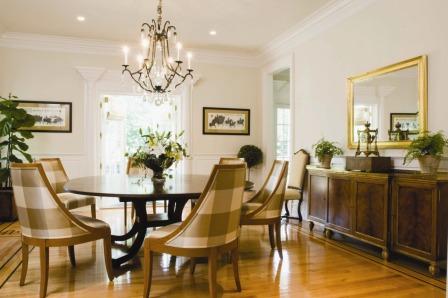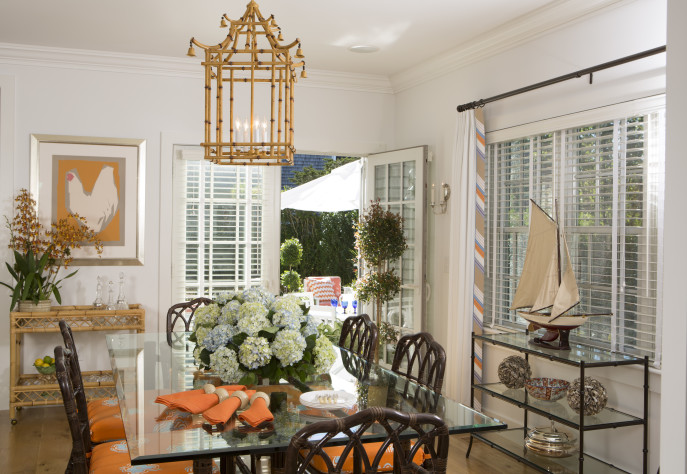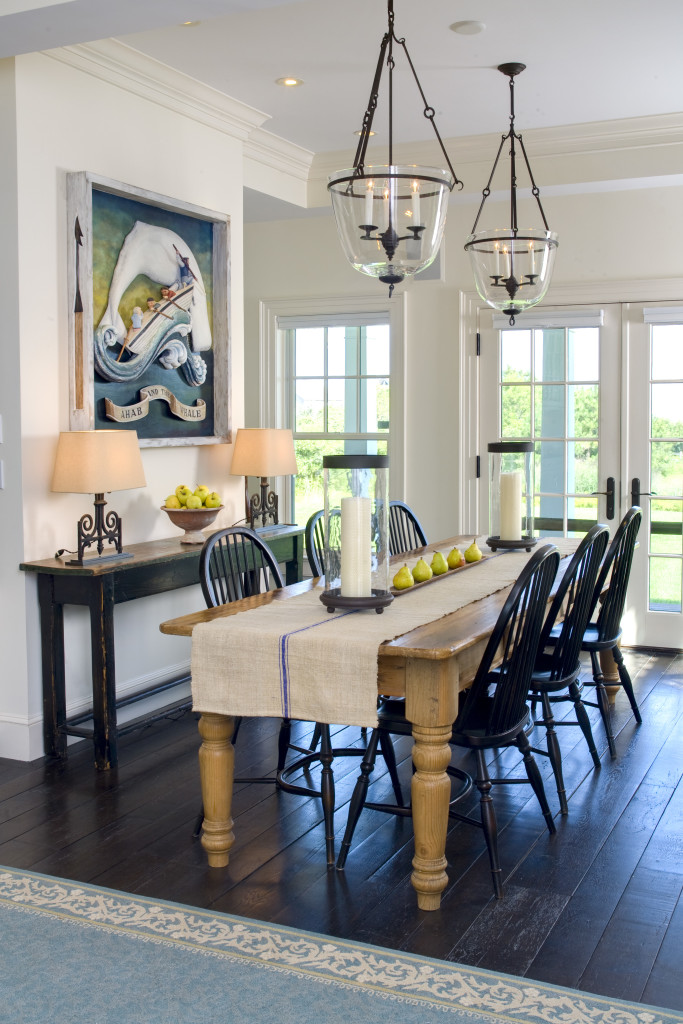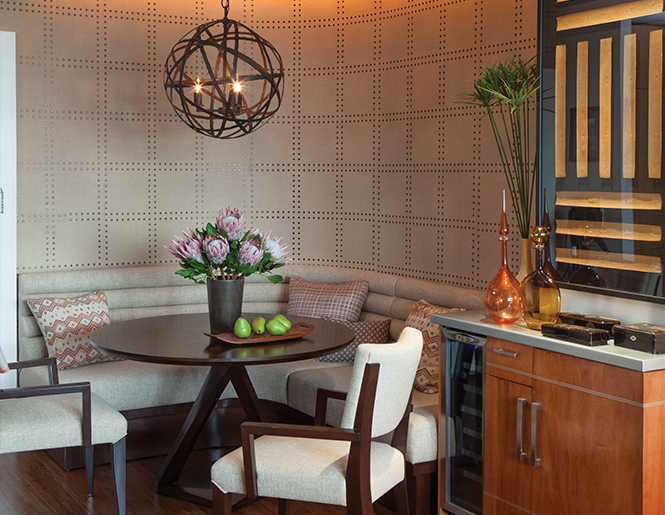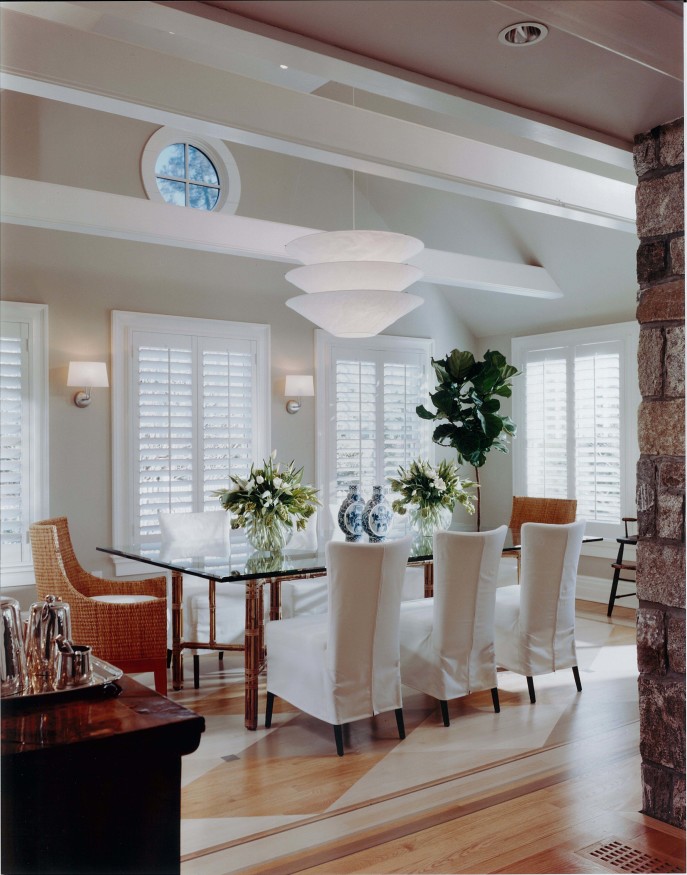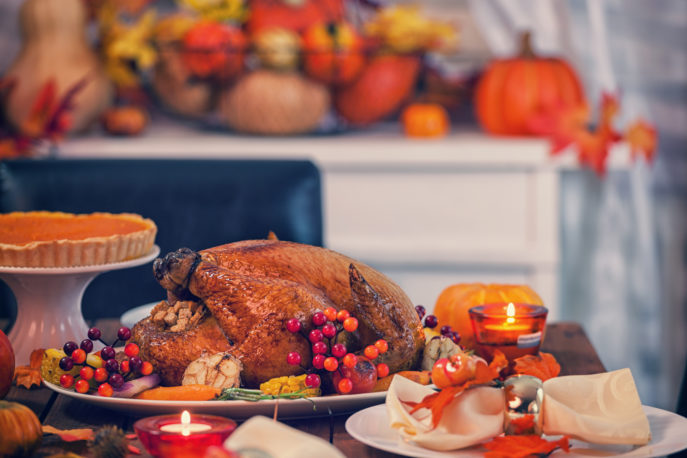
Thanksgiving is a day, an event, and a feeling we evoke by how we present a single meal to the people we love.
One of the joys is the repetition of traditions year after year, with family members who travel from near and far to come together under one roof. We all love to see Grandma’s china, the silver brought from the old country, the crystal goblets that were wedding gifts, the green bean casserole that doesn’t taste the same any other time of the year.
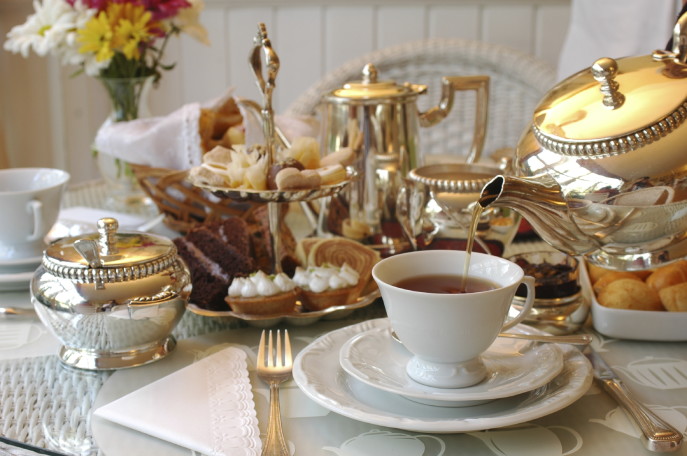
Welcoming your guests with style, though, sometimes means rethinking what makes a home a sanctuary, and what makes a table setting a delight. From flowers in the foyer to cozy nooks arranged for quiet time with a book and a cup of tea, blending old traditions with new ones allows the family to grow and change. And that’s exactly as it should be.

I want to share with you some of the special touches I’ve enjoyed creating for both my clients and my own family. I also want to introduce you to the floral artist I turn to for special occasions: Adam Manjuck, owner of Flowers and Flowers in Darien, Connecticut. He’s spent years creating gorgeous floral and foliage displays for his clients, and specializes in going into their homes and decorating every room with beauty and elegance. He’ll return to Holistic House next month to share even more decorating ideas for the season’s best holiday displays!
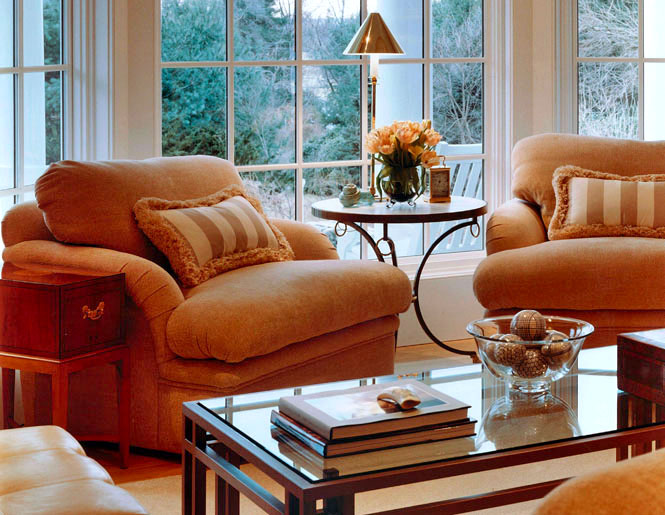
So come in, get comfortable, and let’s talk turkey!

Throughout your home, beginning at the doorstep, engaging all the senses creates a festive frame of mind. Adam points out that when people enter his shop, they are immediately aware of the rich mix of fragrances, from green growing things and soil to the delicate scent of bouquets of flowers left out for visitors to touch, smell, and enjoy.
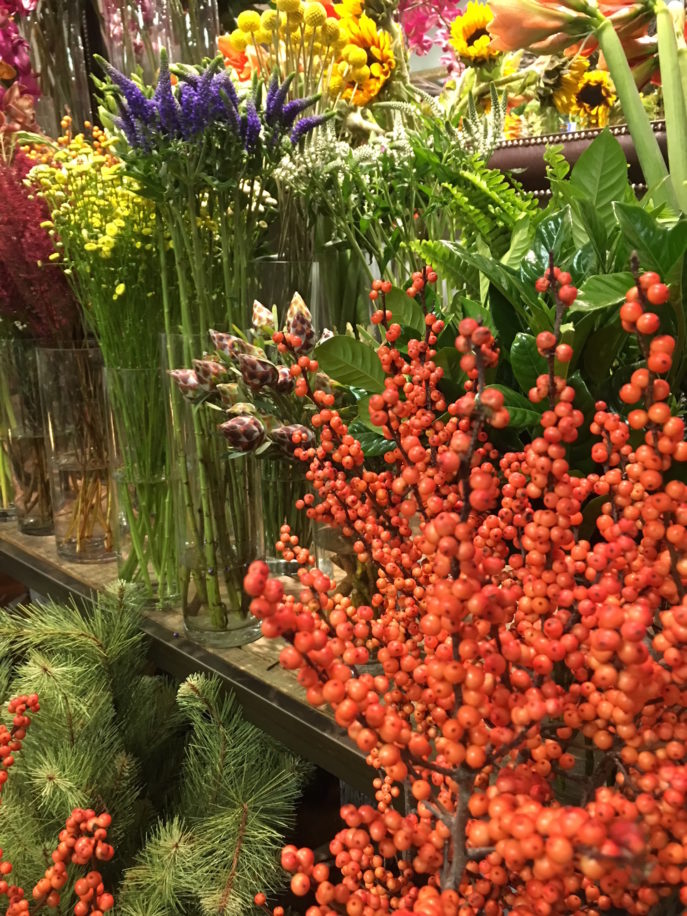
“People are enchanted by the bountifulness and the mingled smells in the shop,” Adam explains. And one of his touch points for holiday decorating for his clients is to create an enticing bounty of fragrance and beauty at home. Our sense of smell can take us back in time, or keep us firmly in the present moment. Adam likes to blend the earthy smells of cinnamon and eucalyptus in addition to floral scents.
Adam continues: “Thanksgiving isn’t all about the table. We do accent pieces around the house, too. The entry way and the powder room are perfect spots for another splash of flowers and foliage. But the table at Thanksgiving is the experience.”
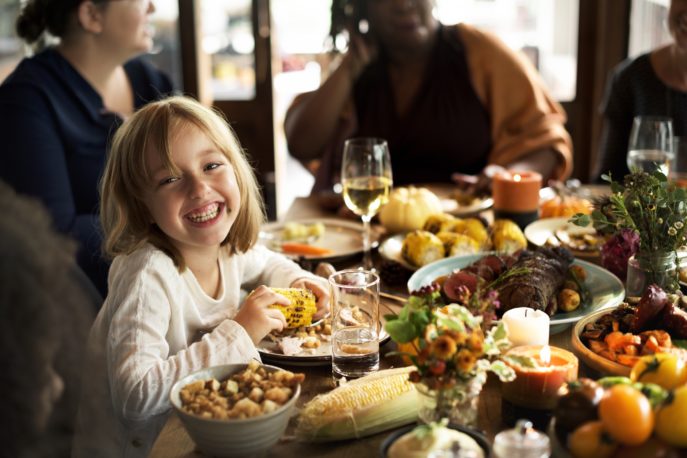
Adam and I agree that it’s key to have the right sized centerpiece! Candles and flowers that are in the way don’t work! Adam says: “It’s either high or low–not in between.” Guests should be able to see each other and converse easily around the table. No one likes to leave the table with a stiff neck from dodging the flowers to talk to Uncle Ned.
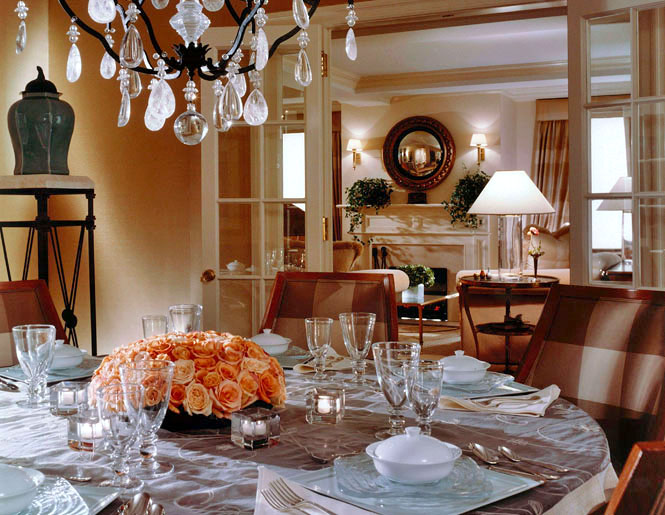
Choose a theme and then don’t be afraid to pull in items that aren’t, strictly speaking, made for dining. The seaside dining tableau, below, used the brilliant shades of orange, blue and white to sing a song of the sea. Napkins were held with rings of polished abalone shells, and tiny seascape Battersea enamel boxes were scattered across the table to set an ocean wavy mood. Whimsical items show your personality and are often conversation starters for guests as they get to know their seat mates. The vintage Murano glass, with its soft tints of amber and green, are a bit of cherished history.
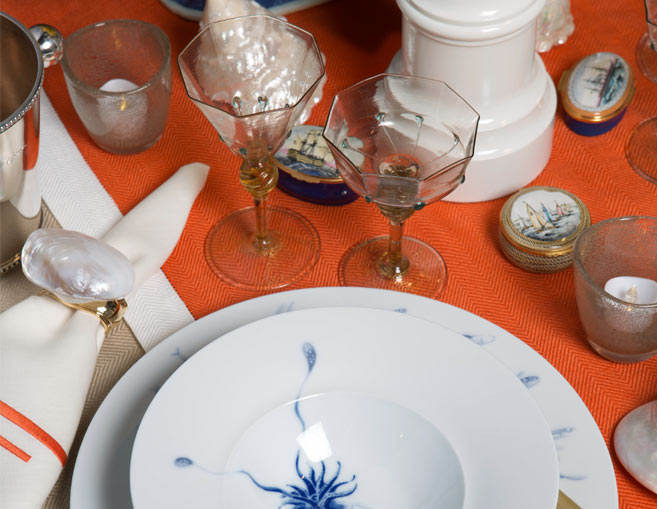
Bone-handled flatware pairs perfectly with Hering Berlin hand-painted porcelain.
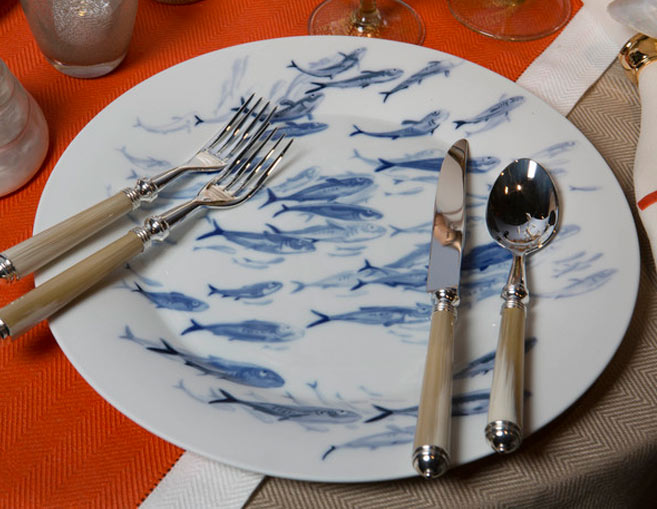
You don’t always need elaborate decorations; sometimes a simple soup tureen can be an eye-catching focal point, especially on Thanksgiving when it’s shaped like a pumpkin.

Don’t automatically reach for a vase to hold flowers. The ivy twining around the table above was cut in my garden just that morning, and was the perfect touch.

Vintage serving pieces, bowls, and even fish bottles can make charming receptacles for flowers. Use the things you love–just arrange them in a slightly different way, and add a spray of ferns, olive branches, or dried grasses to create a stunningly original centerpiece.
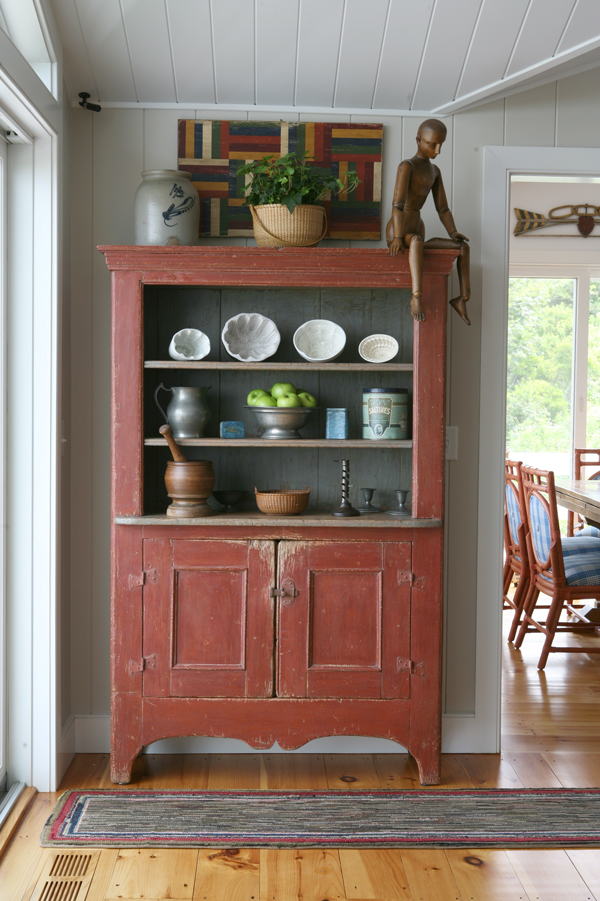
Adam explains that he likes to use the homeowner’s containers instead of generic bowls or vases for his displays. Especially at Thanksgiving, there are sentimental pieces that should be in a place of honor. “Mom and Grandma like to come and see the piece they gave to my client,” he says.
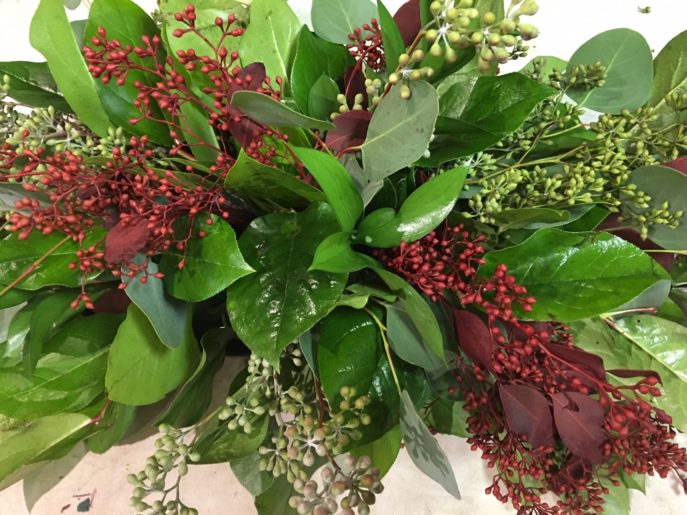
When filling those bowls, his focus is on abundance. “I use lots of foliage,” he says. “You can add flowers and a candle to something low and long that elongates the table. I like trilogies–one larger display flanked by two smaller ones. You can put candles in between. But everyone needs to have something pretty in front of them!”
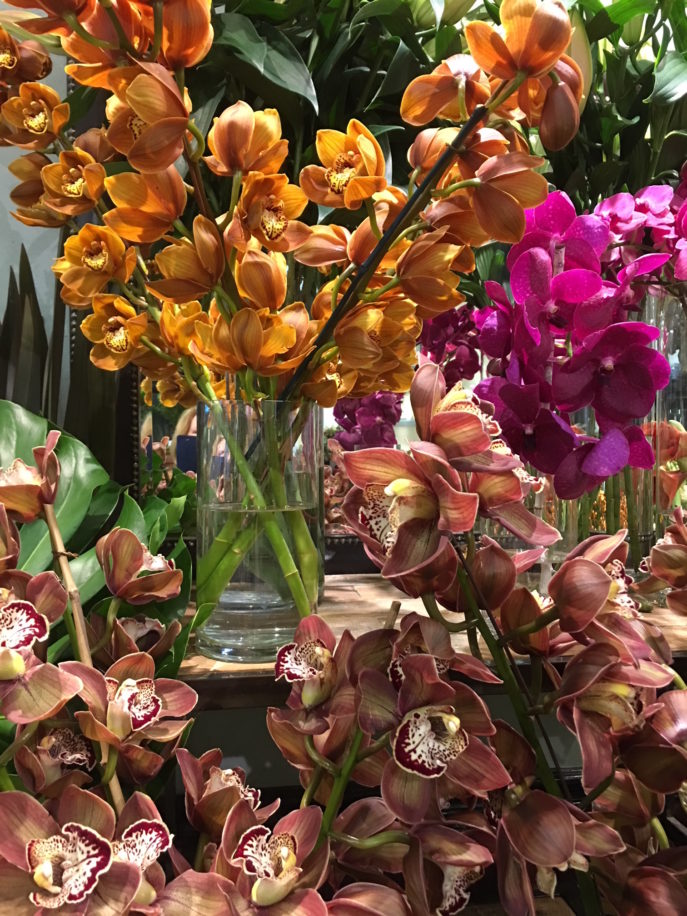
Just as in designing interiors, where texture can add another level of interest, Adam believes in texture and something unexpected. He might tuck in antique hydrangeas, chocolate cymbidium orchids, or seeded eucalyptus.

African pods are another favorite for shape, texture, and color!

The beauty of a single flower shouldn’t be overlooked. The Swedish philosophy of “Lagom,” meaning “just the right amount–not too much, not too little,” encourages selecting one beautiful item for contemplation. A single spray of flowers can be just the right touch.

In the same way, a fall leaf can be the simple touch that’s just enough.
Whatever you do, don’t overlook a special place of honor for the desserts. We created this display one year for the historic Lockwood-Mathews Mansion Museum in Connecticut. The Victorians knew that the richness of desserts deserved a rich setting as well!
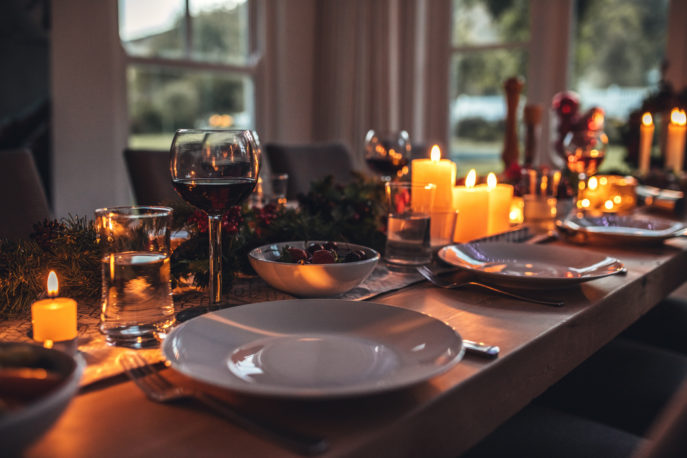
However you begin the holiday season, I hope you’ll find comfort, warmth, and joy with your family and friends as you collect new memories. See you next month at Holistic House for Part II of Welcoming Your Holiday Guests with Style!
